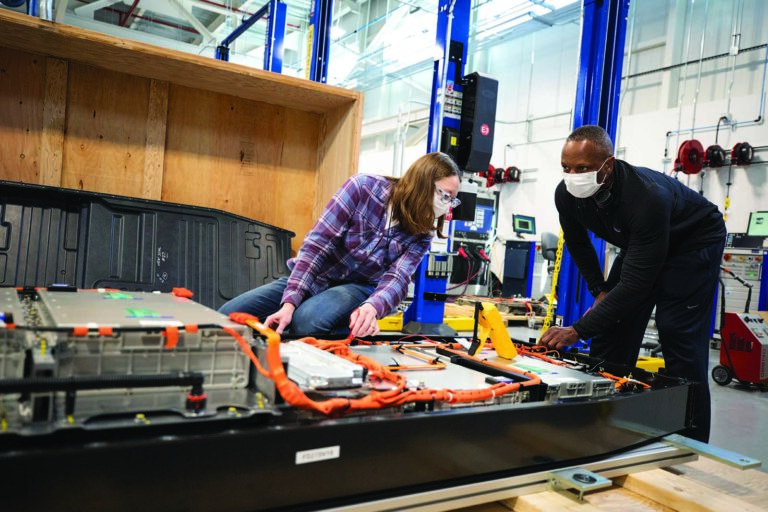The function of the BMS is somewhat outside of this article; however, it does have an impact on the design and layout of a vehicle pack – dictating the type and positioning of sensors recording parameters such as temperature and current, for example. A well-thought-out BMS can make it easier to expand or contract the module count of a pack to cater to different models, as well as saving on BoM and manufacturing time.
Take once again the E-GMP platform from Hyundai. The BMS for each module consists of a compact PCB at the end of the (pouch) cells, which then interfaces with a cell monitoring unit responsible for four modules, located in the central spine of the pack. Each of these units connect to the modules with a common loom, the overall effect being a relatively simple and easily expanded modular low-voltage layout within the pack.
Evidently, the simpler the low-voltage wiring inside a pack can be, the better from a cost and weight/volume perspective, but this cannot be to the detriment of safety and performance. For example, for cell monitoring, the ideal solution is individual measurement of each cell, but this involves the use of separate sensors (such as thermistors) and associated cabling for each cell, considerably increasing the complexity of the pack. Fortunately, there are solutions under development to mitigate this. For example, German company InnovationLab has developed a thin foil sensor for use with both pouch and prismatic cells, with the sensor placed between each cell.

The sensors are multirole and can record both pressure and temperature with the latter obtained using a temperature-sensitive resistor printed onto the foil. Furthermore, the sensors do not simply provide a spot reading, they give the temperature distribution across the cell.
One interesting development that addresses the issue of wiring complexity and data transfer requirements of individual cell monitoring is the application of wireless sensors. Dukosi, a Scottish company specializing in battery systems, has developed a chip-on-cell battery monitoring system that relies on NFC (near-field communication) to transfer cell health data to a single low-voltage wire loop that runs around the battery pack. Each cell is fitted with a CMOS chip, powered by the cell it is attached to, and data on battery voltage and other parameters can be quickly transmitted to the BMS.
Marelli, meanwhile, recently unveiled a wireless distributed BMS, which operates in the 2.4GHz range. It shares many components with the company’s wired systems, but eliminates the communication cables between the module level slave BMS and the master board. The company says that implementing a wireless solution can save up to 80% of the mass of a pack’s internal wiring. In order to ensure that the BMS communication is secure, the signals are encrypted, and the battery enclosure itself helps to limit the propagation of the signals beyond the vehicle. The use of wireless BMS not only cuts down on wiring volume, but also eliminates the need for bespoke harnesses from model to model, making it easier to adapt pack configurations.


